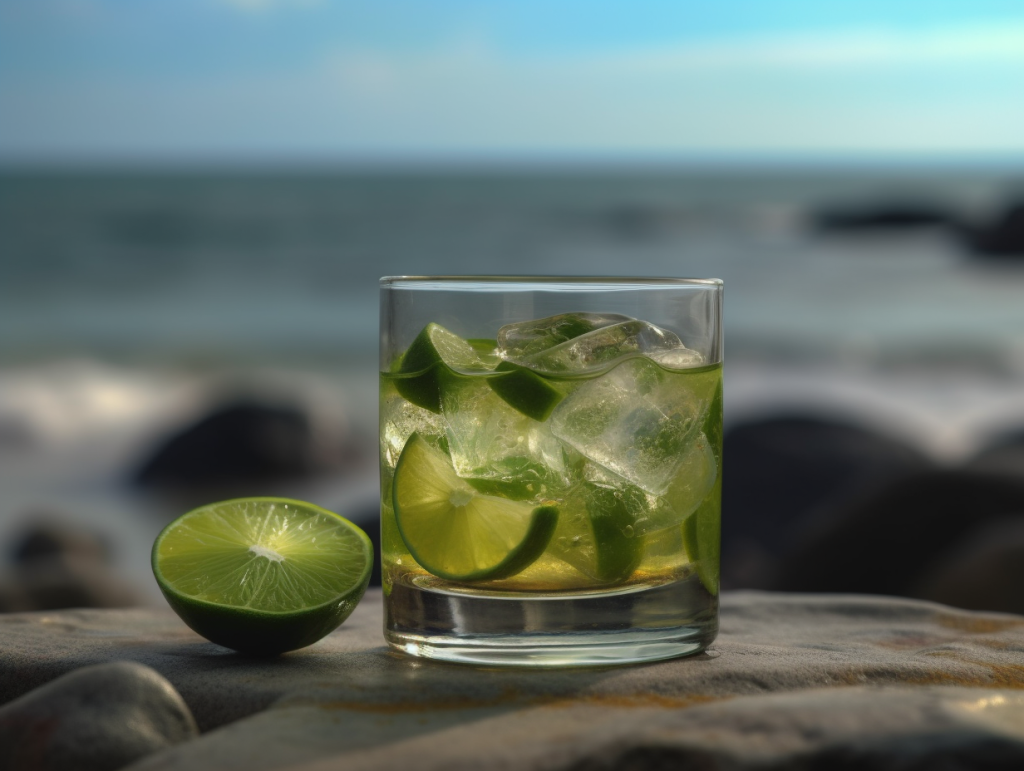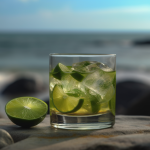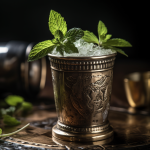The caipirinha is a traditional Brazilian drink that is beloved around the world for its refreshing taste and unique blend of flavors. This cocktail is made using cachaça, which is a type of Brazilian distilled spirit made from sugarcane juice. The drink is typically served in a glass with ice and is mixed with fresh lime juice and sugar. The result is a delicious and tangy cocktail that is perfect for warm weather and outdoor gatherings.
The drink is believed to have originated in the rural areas of the country, where cachaça was a popular drink among farmers and laborers. Over time, it became more widespread and gained popularity throughout the country. Today, the caipirinha is considered the national cocktail of Brazil and is enjoyed by people all over the world. Whether you are looking for a refreshing drink to cool off on a hot day or want to experience a taste of Brazilian culture, the caipirinha is a great choice.


Caipirinha
- Total Time: 5 minutes
- Yield: 1 cocktail 1x
Ingredients
- 2 oz Cachaça
- 1 Lime
- 1 Tbsp Sugar (extra fine granulated)
Instructions
- Cut the ends off of the lime and discard them, then cut the lime in half lengthwise.
- For both parts of the lime, make two angled cuts to remove and discard the white part in the middle.
- Cut each half of the lime lengthwise again, then cut each piece in thirds.
- Throw the lime pieces in a shaker and add the sugar on top.
- Muddle until all the juice is squeezed out of the limes.
- Add a generous amount of cubed ice, pour in the cachaça, and shake well.
- Pour the entire contents into a rocks glass (or strain into a cocktail glass with ice if you don’t want the pieces of lime). Garnish with a lime wheel.
Notes
If you would rather juice the limes instead of muddling, or if you are scaling up the recipe to make a large batch of caiprinha, it is more efficient to juice the limes and use simple syrup instead of sugar. 1 lime yields approximately 1 oz of lime juice, and 1 oz of simple syrup can be used instead of a tablespoon of sugar.
Try muddling other fruits with the lime, such as pineapple chunks or strawberries.
- Prep Time: 5 minutes
While the traditional recipe for caipirinha calls for cachaça, it can also be made using other spirits, such as vodka or rum. This has led to the creation of variations like the caipiroska and the caipirissima. Despite these variations, however, the traditional caipirinha remains the most popular and beloved version of the drink.
One of the reasons for the popularity of caipirinha is its versatility. It is a great drink for any occasion, from a casual backyard barbecue to a formal dinner party. The drink can be easily adapted to suit any taste, from the sweetness of ripe fruit to the sourness of limes. Its refreshing and tangy flavor also makes it a great choice for hot summer days.
Another reason for the popularity of caipirinha is its association with Brazilian culture. Brazil is known for its vibrant and colorful culture, and the caipirinha is a perfect representation of this. The drink is often associated with the beach, samba music, and the festive spirit of Carnival. It is a symbol of Brazilian hospitality and a way to share the country’s culture with others.
The caipirinha has also played an important role in the economic development of Brazil. Cachaça is a major export for the country and is an important source of income for farmers and producers. The global popularity of the caipirinha has helped to increase demand for cachaça and has made it a valuable commodity on the international market. This has led to the development of new cachaça brands and has helped to promote the drink and its cultural significance around the world.
In conclusion, the caipirinha is more than just a cocktail; it is a symbol of Brazilian culture, history, and economic development. Its refreshing and tangy flavor makes it a favorite among drinkers around the world, and its versatility makes it a great choice for any occasion. Whether you are sipping a caipirinha on the beach in Rio de Janeiro or at a bar in New York City, the drink is a celebration of Brazil’s rich culture and history.



